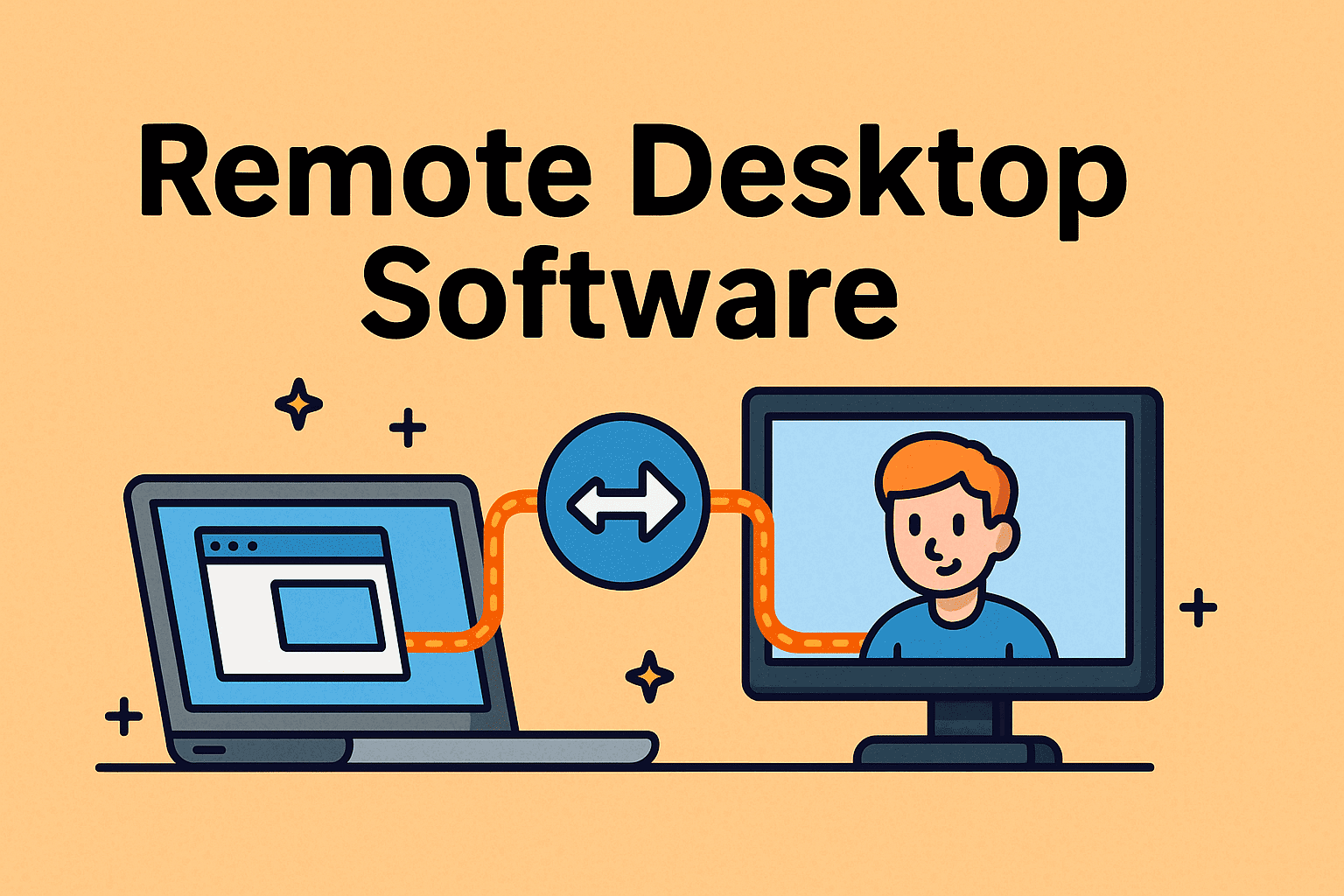Updated on October 7, 2025, by OpenEDR
In today’s hybrid and remote-first world, employees need secure and seamless access to their work systems from anywhere. But this raises a question: how do businesses ensure secure remote access without compromising performance or cybersecurity?
The answer lies in remote desktop software. This technology allows users to connect to and control a computer remotely as if they were physically present. For IT managers, CEOs, and cybersecurity professionals, remote desktop software has become a mission-critical tool for productivity, business continuity, and secure remote work environments.
What Is Remote Desktop Software?
Remote desktop software is an application or protocol that enables a user to access and control a computer from a different location. The connection is established through the internet or a private network, allowing remote users to access files, run applications, and troubleshoot systems.
Key Characteristics:
Provides full desktop access from anywhere.
Supports file transfers, printing, and application use.
Can be managed via cloud-based or on-premise infrastructure.
Includes security layers such as encryption and multi-factor authentication.
👉 In short: Remote desktop software is the backbone of secure and flexible work environments.
Why Businesses Need Remote Desktop Software
The adoption of remote desktop tools skyrocketed with remote work. But beyond convenience, it delivers enterprise-level advantages:
Remote Work Enablement – Employees can access office systems from anywhere.
Business Continuity – Keeps operations running during disruptions.
IT Support Efficiency – Allows IT teams to troubleshoot remotely.
Cost Reduction – Minimizes need for physical infrastructure.
Enhanced Security – Secures access with encryption and monitoring.
Remote Desktop Software vs VPN
Many confuse remote desktop solutions with VPNs (Virtual Private Networks). Here’s how they differ:
| Feature | Remote Desktop Software | VPN |
|---|---|---|
| Purpose | Access and control remote PC | Securely connect to network |
| User Experience | Full desktop environment | Limited to network access |
| Security | End-to-end encryption + MFA | Encrypted tunnel |
| Best Use | Remote IT support, work apps | Secure data transfer |
👉 Verdict: VPN secures connections, but remote desktop software delivers full productivity and management capabilities.
Key Features of Remote Desktop Software
When evaluating remote desktop tools, IT managers should look for these features:
1. Cross-Platform Access
Support for Windows, macOS, Linux, iOS, and Android.
2. Multi-Factor Authentication (MFA)
Adds an extra layer of security beyond passwords.
3. Session Recording and Monitoring
Useful for audits and compliance.
4. Scalability
Must support enterprise-level user bases and multiple sessions.
5. Performance Optimization
Low latency connections and bandwidth efficiency.
6. File and Clipboard Sharing
Secure transfer of files between remote and local devices.
Top Use Cases of Remote Desktop Software
IT Helpdesk and Troubleshooting – Support teams can resolve user issues without being on-site.
Remote Work Enablement – Employees access critical applications securely.
Secure Access for Contractors – Third-party vendors access only authorized systems.
Data Center Management – IT admins control servers without physical presence.
Disaster Recovery – Ensures business operations continue during disruptions.
Security Risks of Remote Desktop Software
While powerful, remote desktop tools can be targeted by cybercriminals. Weak setups may expose companies to threats like:
Brute-Force Attacks – Hackers guessing weak passwords.
Unencrypted Connections – Data exposed to interception.
Unauthorized Access – Compromised accounts without MFA.
Ransomware Delivery – Exploiting open ports like RDP (port 3389).
👉 This makes cybersecurity controls essential when deploying remote desktop software.
Best Practices for Secure Remote Desktop Deployments
Enforce Strong Authentication – Use MFA for all remote sessions.
Limit Access – Only authorized users should have access to remote systems.
Regularly Patch Software – Keep remote desktop software updated.
Monitor Session Logs – Detect unusual or unauthorized activity.
Use Endpoint Detection & Response (EDR) – For real-time threat detection.
Disable Unused Services – Close unused RDP ports to minimize exposure.
Popular Remote Desktop Software Solutions
Here are some of the most trusted solutions in 2025:
Microsoft Remote Desktop – Widely used in enterprise Windows environments.
TeamViewer – Known for cross-platform support and ease of use.
AnyDesk – Lightweight, high-performance remote access.
Citrix Virtual Apps & Desktops – Enterprise-grade virtualization.
Chrome Remote Desktop – Simple browser-based solution.
Remote Desktop Software in Cybersecurity Strategy
For IT managers and CISOs, remote desktop software is more than a tool—it’s part of a broader security framework.
Zero Trust Models – Ensures every connection is verified.
Network Segmentation – Restricts access to sensitive systems.
Compliance Readiness – Provides logging and encryption for audits.
Incident Response – Remote monitoring and control help contain threats quickly.
The Future of Remote Desktop Software
Emerging technologies are shaping the next phase of remote desktop tools:
AI-Powered Monitoring – Automated anomaly detection in sessions.
Integration with Cloud Security – Tighter link to SaaS and IaaS platforms.
Biometric Authentication – Passwordless secure logins.
5G and Edge Computing – Reduced latency for global users.
Extended Reality (XR) Workspaces – Future of remote collaboration.
FAQs: Remote Desktop Software
1. What is remote desktop software used for?
It allows users to access and control computers remotely for work, IT support, or management.
2. Is remote desktop software secure?
Yes, if configured with encryption, MFA, and monitoring tools.
3. Can remote desktop software replace VPNs?
Not exactly. VPNs secure connections, while remote desktops provide full system access.
4. Which remote desktop software is best for businesses?
Microsoft Remote Desktop, Citrix, and AnyDesk are popular enterprise choices.
5. What are the risks of using remote desktop software?
Weak authentication and unpatched systems can expose businesses to cyberattacks.
Conclusion: Why Remote Desktop Software Is Essential
So, what is remote desktop software? It’s a powerful tool for secure remote access, IT support, and business continuity. For CEOs, IT managers, and cybersecurity leaders, remote desktop tools are no longer optional—they’re essential for enabling productivity while maintaining enterprise-grade security.
The key is to deploy them securely, with strong authentication, monitoring, and integration into your endpoint security strategy.
👉 Take the next step in protecting your business: Register for OpenEDR Free
